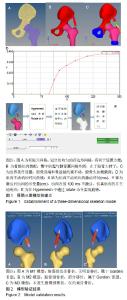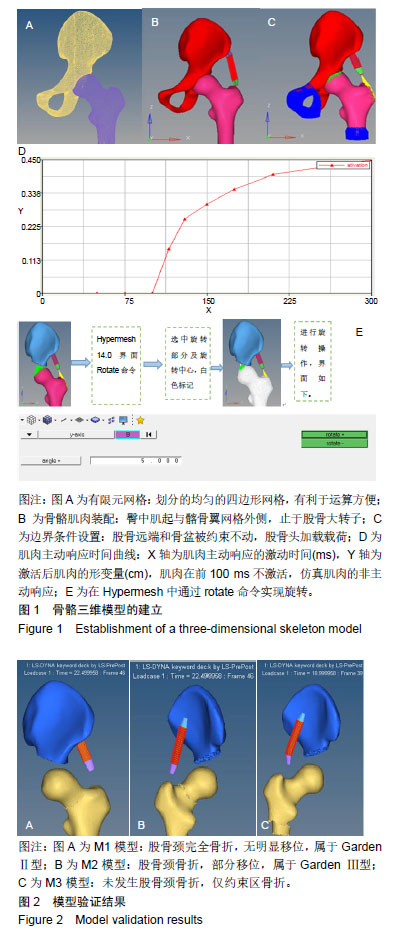| [1] Mithal A, Bansal B, Kyer CS, et al. The Asia-Pacific Regional Audit-Epidemiology, Costs, and Burden of Osteoporosis in India 2013: A report of International Osteoporosis Foundation. Indian J Endocrinol Metab. 2014;18(4):449-54.[2] 洪维,朱晓颖,程群,等.老年髋部骨折患者肌肉减少症与骨密度的关系[J].中华骨质疏松和骨矿盐疾病杂志,2014,7(2):106-112.[3] 黄宏兴,吴青,李跃华,等.肌肉、骨骼与骨质疏松专家共识[J].中国骨质疏松杂志,2016,22(10):1221-1229,1236.[4] 李宗涛,葛新发,罗冬梅,等.神经肌肉反应活动能力衰退导致老年女性跌倒的因素研究[J].中国运动医学杂志,2015,34(6):559-563.[5] 杜根发.基于断裂力学探讨骨密度影响老年股骨颈骨折的有限元分析[D].广州:广州中医药大学,2017.[6] 韩勇.车辆与行人碰撞中下肢动力学响应和损伤生物力学分析[D].长沙:湖南大学,2009.[7] 李鹏飞,杜根发,林梓凌,等.基于LS-DYNA模拟老年股骨颈骨折的有限元分析[J].中国组织工程研究,2016,20(44):6606-6611.[8] 克鲁逊.克氏康复医学[M].北京.高等教育出版社,2014:18-20.[9] Santilli V, Bernetti A, Mangone M, et al. Clinical definition of sarcopenia. Clin Cases Miner Bone Metab. 2014;11(3):177-180.[10] Morley JE, Anker SD, von HS. Prevalence, incidence, and clinical impact of sarcopenia: facts, numbers, and epidemiology-update 2014. J Cachexia Sarcopenia Muscle. 2014;5(4):253-259.[11] Cruz-Jentoft AJ, Baeyens JP, Bauer JM, et al. Sarcopenia: european consensus on definition and diagnosis: report of the european working group on sarcopenia in older people. Age Ageing. 2010.39(4):412-23.[12] Scott D, Daly RM, Sanders KM, et al. Fall and fracture risk in sarcopenia and dynapenia with and without obesity: the role of lifestyle interventions. Curr Osteoporos Rep. 2015;13(4):235-244.[13] 文华林,郭书权,柳维才,等.髋部肌肉密度下降与髋部骨折的相关性研究[J].检验医学与临床,2017,14(13):1998-2000.[14] 王彤,张跃.肌力训练对人工全髋置换术患者髋关节的生物力学影响[J].中国康复医学杂志,2001,16(5):288-291.[15] Widrick JJ, Fuchs R, Maddalozzo GF, et al. Relative effects of exercise training and alendronate treatment on skeletal muscle function of ovariectomized rats. Menopause. 2007;14(3 Pt 1):528-534.[16] 杨洪武,曾逸文,王刚锐,等.髋周肌肉对髋臼骨折的影响[J].中华创伤杂志, 2006,22(9):694-697.[17] 仲照明,宫赫,肖智韬,等.髋臼力和肌肉力对股骨有限元分析结果的影响[J].哈尔滨工业大学学报,2011,43(S1):303-308.[18] 麻恒源.唇裂唇鼻肌肉系统三维解剖学研究与唇裂功能性修复的有限元生物力学模似[D].北京:北京协和医学院,2016.[19] 杨鹏,魏秋实,陈达,等.基于头臼接触理论构建具有精确软骨受力面的股骨近端三维模型[J].广东医学,2017,38(20):3127-3131.[20] Davis J, Kaufman KR, Lieber RL. Correlation between active and passive isometric force and intramuscular pressure in the isolated rabbit tibialis anterior muscle. J Biomech. 2003;36(4):505-512.[21] Myers BS, Woolley CT, Slotter TL, et al. The influence of strain rate on the passive and stimulated engineering stress--large strain behavior of the rabbit tibialis anterior muscle. J Biomech Eng. 1998;120(1):126-132.[22] 李凡,胡伟,粟思橙,等.能够模拟颈部肌肉主动力的混合假人模型[J].汽车安全与节能学报,2015,6(3):245-249.[23] Li F, Laville A, Bonneau D,et al. Study on cervical muscle volume by means of three-dimensional reconstruction. J Magn Reson Imaging. 2014;39(6):1411-1416.[24] 李凡,曹迎春,粟思橙,等.后碰撞中乘员颈部肌肉有限元模型的建立与验证[J].湖南大学学报(自然科学版),2016,43(8):45-51.[25] 康颖安.断裂力学的发展与研究现状[J].湖南工程学院学报(自然科学版), 2006,16(1):39-42.[26] 余寿文.断裂力学的历史发展与思考[J].力学与实践,2015,37(3):390-394.[27] 韩学冲.论断裂力学的发展和应用[J].住宅与房地产,2017,(24):286.[28] 王荣.水泥混凝土路面断裂力学的应用现状及前景[J].武夷学院学报,2016, 35(3):81-83.[29] 张友根,曹亮.基于线弹性断裂力学的注塑机拉杆组件的微裂纹稳定要素的研究及应用(上)[J].橡塑技术与装备,2015,41(6):6-19.[30] 张红叶,陈伟.基于断裂力学的重力坝有限元非线性动力分析[J].世界地震工程,2015,31(1):267-270.[31] 郑利钦,林梓凌,李鹏飞,等.动态载荷下松质骨对骨质疏松性股骨颈骨折断裂力学影响的有限元分析[J].中国组织工程研究,2019,23(12):1887-1892.[32] 郑利钦,林梓凌,何祥鑫,等.有限元法分析不同侧方跌倒角度下股骨颈骨折裂纹扩展的断裂力学特征[J].中国组织工程研究,2019,23(8):1203-1207.[33] 孙文涛,林梓凌,李凡,等.基于Hypermesh/LS-DYNA仿真股骨干中上1/3骨折的断裂分析[J].广东医学,2017,38(16):2481-2483. |

